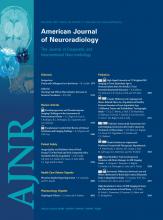Abstract
The current standard of care for newly diagnosed cases of high-grade glioma is surgical resection followed by RT with concurrent chemotherapy. The most widely used criteria for assessing treatment response are based on a 2D measurement of the enhancing area on MR imaging known as the Macdonald Criteria. Recently, nontumoral increases (pseudoprogression) and decreases (pseudoresponse) in enhancement have been found, and these can confuse outcome evaluation. Here we review pseudoprogression and pseudoresponse and describe how better understanding of these phenomena can aid interpretation.
ABBREVIATIONS
- ADC
- apparent diffusion coefficient
- BBB
- blood-brain barrier
- Cho
- choline
- DSC
- dynamic susceptibility-weighted contrast-enhanced perfusion MR imaging
- DTI
- diffusion tensor imaging
- DWI
- diffusion-weighted imaging
- FDG
- fluorodeoxyglucose
- FLAIR
- fluid-attenuated inversion recovery
- GBM
- glioblastoma multiforme
- MGMT
- methyltransferase
- NAA
- N-acetylaspartate
- PET
- positron-emission tomography
- PSR
- percentage of signal-intensity recovery
- RANO
- Response Assessment in Neuro-Oncology
- rCBV
- relative cerebral blood volume
- RECIST
- Response Evaluation Criteria in Solid Tumors
- ROC
- receiver operating characteristic analysis
- RT
- radiation therapy
- TMZ
- temozolomide
- VEGF
- vascular endothelial growth factor
- © 2011 by American Journal of Neuroradiology
Indicates open access to non-subscribers at www.ajnr.org












